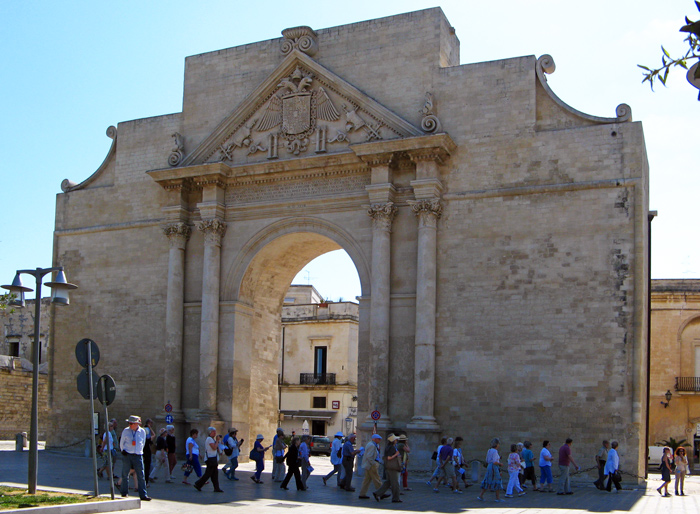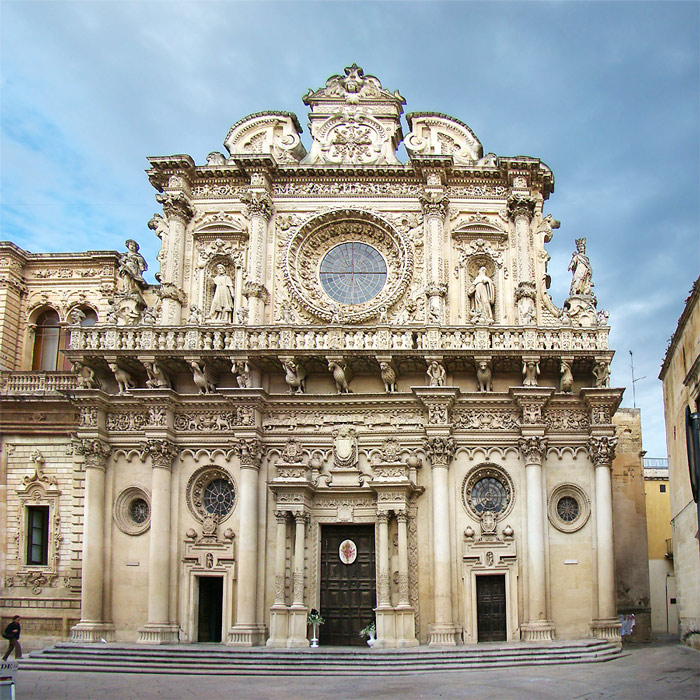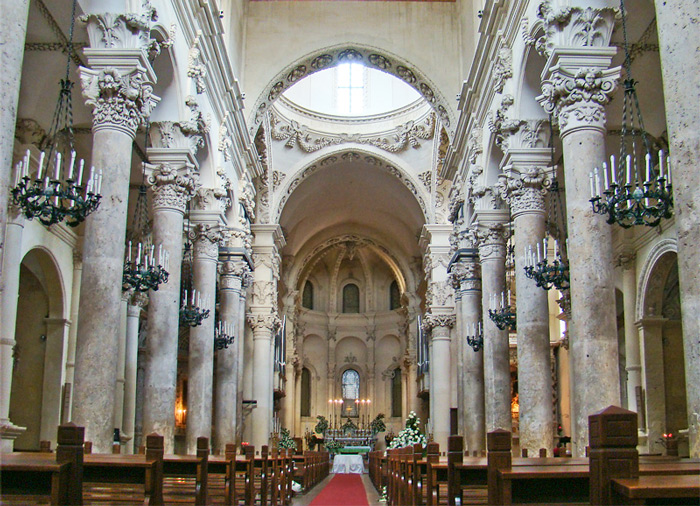This is an ancient settlement, some 2000 years old. Its heyday was in the prosperous 17th century which saw an explosion of construction in the flowery Baroque style so popular back then. Admirers of Baroque may find the town irresistible, especially if they do not mind whether the architecture has been colorfully restored or not. The town, when crowded with tourists, can be challenging to document with a simple camera --- or, so claims this amateur.
Our guided tour began at Lecce’s obelisk, erected in 1822 in honor of a visiting monarch. We entered the historical center by way of the nearby Porta Napoli, one of three such gates in Lecce:


The Church of the Holy Cross (aka, the Basilica di Santa Croce) was our first target and, likely, the #1 tourist attraction in town. Begun in 1353, it was nearly 350 years in the making --- perhaps, due to its ornately sculptured exterior. The facade is said to be filled with “pacing lions, howling dragons, cross-bearing angels, undersea creatures, turbaned Turks, topless women, urns, scrolls, birds, horses, heralds, shells and flowers.” When we saw the Church, it was richly decorated in scaffolding --- high, low and in-between. So, Internet photos of the exterior and interior are presented first to better convey how the Church was intended to be seen:




Not far away, we entered Piazza Sant’Oronzo, the civic heart of town, a blend of the ancient and the modern:

Directly behind those two structures is a partially excavated Roman amphitheater:

The last major attraction we visited was the Lecce Cathedral or Duomo:

There are two ways in, the one above is the main entrance. To the left of that doorway is the campanile and, to the right, around the corner, is the other entrance:


The Piazza del Duomo, in front of the Cathedral, felt spacious yet intimate. Here is its appearance from the main entrance steps:

On our own in the afternoon, Patty and I wandered through some less frequently visited parts of town. Hidden away from the tourist throngs, this piece of Roman antiquity was worth our effort to find it:

We were told Lecce residents love their siesta. If you want to meet them, you need to be out later in the day. The younger set, families with small children and the elderly all promenade the streets late in the evenings, with the town coming to life between eight and midnight.